11 Tips For Organizing A Trade Show During And After COVID 19
As the world finds its feet again after the devastating effects of the 2019 Corona Virus Disease (COVID-19), the trade show industry is already showing “signs of life” as exhibitors work out the best ways for organizing a trade show during and after COVID 19.
Some organizations already know how to organize trade shows during COVID and are taking the bull by the horn to restore confidence in in-person experiences as it used to be.
If you want to join this crop of bold industry pacesetters, you need to put certain health safety measures in place to prevent the possible spread of the coronavirus.
This article will share the most important tips for organizing safe in-person trade show events during and after the global pandemic.
Are Trade Shows Legal Right Now in the US?
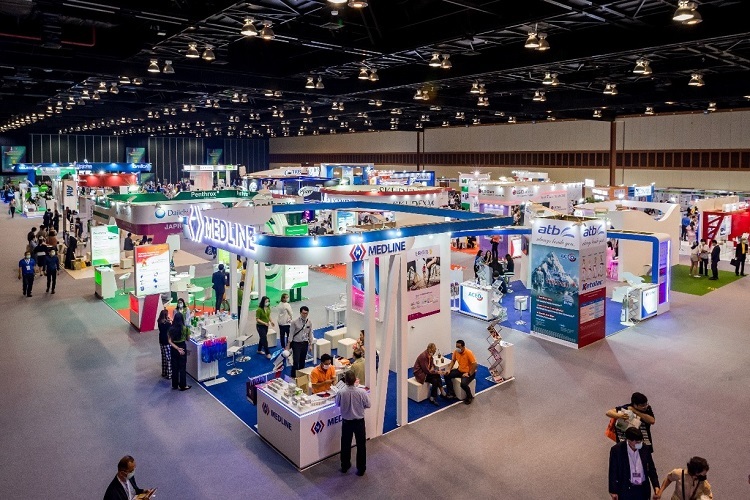
Live events and conventions are not what they used to be before COVID. But as state governments begin to ease restrictions and lift the stay-at-home orders, businesses are beginning to reopen.
The trade show industry is not left out, as long as organizers prioritize the safety and health of staff and visitors at all times. With social distancing and COVID-19 restrictions lifted in some states, it is expected that the trade show industry will gradually return to its live events.
This is not something set to happen sometime in the distant future. In fact, some industries are already capitalizing on the guidelines for the safe reopening of businesses and are likely to make a comeback in 2021. A few of these include:
- Wholesale distribution trade shows: Some of the events in this industry will feature organizations, such as the Southern Association of Wholesale Distributors, GlobalShop 2021, and the 2021 Mississippi Market Wholesale Show.
- Pharma trade shows: The International Society for Pharmaceutical Engineering and the American Association of Pharmaceutical Sciences are hosting events in 2021. Also, the American Association for Clinical Chemistry (AACC) is set to host its Annual Scientific Meeting and Clinical Lab Expo in the closing weeks of September 2021.
- Financial trade shows: Many organizations are hosting events, including the American Council of Life Insurers and the National Association of Personal Financial Advisors.
Equally, associations are not left out. A few of the events include the International Convention of Allied Sportsfishing Trades, the National Association of Chain Drug Stores Expos, and the Internet Retailer Conference and Exhibition.
However, an essential part of knowing how to organize trade shows during COVID is ensuring strict compliance with health and safety regulations provided in COVID-19 guidance materials.
The Impact of COVID on the Trade Show Industry
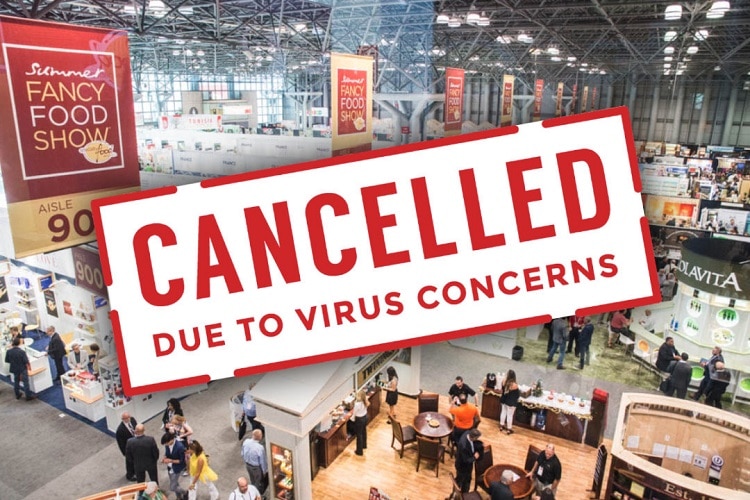
Only a couple of years back – 2019 to be exact, the trade show industry in the United States was worth 15.58 billion U.S. dollars.
Fast-forward to a year later, and the vibrant industry came to a screeching halt. It was valued at only $5.6 billion, which is a paltry one-third of its previous worth.
But this sharp decline is not peculiar to the trade show industry. All industries that aren’t based on digital presence suffered the same blow, no thanks to the global pandemic.
With in-person attendance and intra-city travel restrictions in full force in nearly all countries on the planet, it was no surprise that organizing trade show events were off the table. It didn’t take long before the virtual trade show experience became the new normal.
Even now, many people still prefer virtual trade show experiences. This means it may take a little longer for the trade show industry to make a full comeback. Thankfully, the pandemic is fading and things are gradually returning to the “old normal.”
Health Precautions for Post-COVID Trade Shows
Although many businesses have opened their doors and the global economy is gradually picking up again, there are still concerns about post-covid trade shows and the safety of attending in-person events.
No one – vendor, executive, sponsor, staff, or patron – would risk coronavirus exposure just to attend a gathering, regardless of how potentially profitable the event may be.
There are a couple of ways to encourage in-person attendance for trade shows post-COVID. A few of these include:
- Emphasizing the unique travel experience and exciting event location since the prospect of a mini-vacation is likely to appeal to most people who have remained in one place for over a year.
- Promoting hands-on interaction – an experience that is obviously lacking with virtual trade shows.
All these may be effective, but ensuring visitors’ safety is arguably the most crucial step in getting people to attend in-person trade shows post-COVID.
Event planners must prioritize the health and safety of their staff and attendees when organizing trade shows. Also, the facility or event venue must comply with recommended safety regulations to encourage people to attend shows.
The following vital health precautionary tips on how to organize trade shows during COVID will help organizers to promote safety and encourage attendees to show up.
Tips for Keeping Event Venues Safe
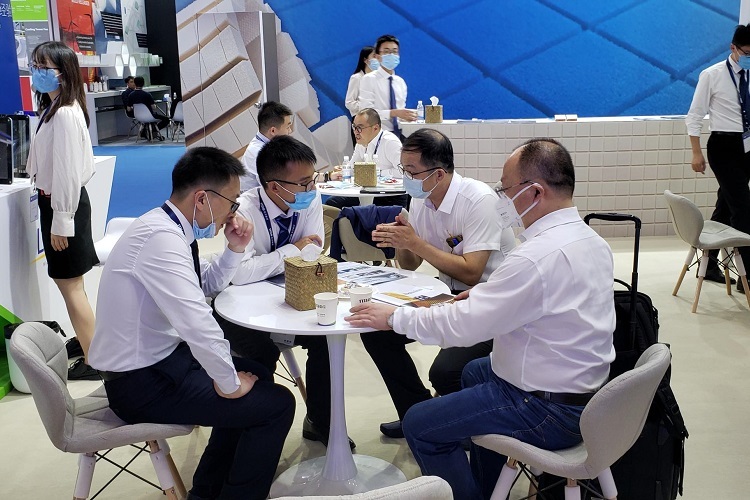
Potential guests, sponsors, vendors, and patrons need to be sure that the facility or venue of the trade show event is safe, or else the turnout will be poor and, in turn, negatively affect your return on investment (ROI).
Consider the following safety measure:
Adequate Ventilation
- Hold trade shows outdoors if possible. If this is not feasible due to the peculiar nature of your exposition, make sure there is ample ventilation for indoor events. Keep windows and doors open when the weather conditions permit.
- Consider using fans to increase the effectiveness of open doors and windows. This will also reduce HVAC air recirculation considerably.
- Set the HVAC system to the maximum outside airflow for an indoor event, and let it run for two hours before attendees start showing up for the trade show. At the end of the day’s exhibition, let the system run again for two hours after everyone has left the building.
Frequent Cleaning
- Conduct routine cleaning using soaps and detergents, and make sure to increase the cleaning frequency. This can reduce germs and contaminants and minimize the chances of getting infections from highly-touched surfaces, such as handrails, counters, and tables.
- Also, disinfect surfaces periodically to kill any remaining germs. This will go a long way in reducing the risk of spreading infection.
- Make sure restrooms or washrooms are in tip-top conditions and cleaned more frequently than ever.
- If possible, hire professional cleaning companies to provide deep cleaning. In addition to considerably minimizing pathogen transmission and workers’ exposure to germs, using professional cleaners can boost potential visitors’ confidence in the safety of the venue.
Physical Barriers
- Put measures in place to prevent crowding, whether your exposition is indoors or outdoors. You can do this by installing physical barriers, such as retractable retail barriers that provide excellent safety in retail situations.
- Use metal or wooden guide rails to encourage physical distancing. Install these in addition to markings for queues. If you have an existing indoor event venue, you may need to modify the layouts to accommodate these additions.
Provide COVID-19 Vaccination and Testing Stations
- Encourage COVID-19 vaccinations at the event venue. You can do this by working with state or local health departments to offer vaccination to staff and attendees during the event. Make sure that people are aware of this offer and they know exactly where to get the vaccines at the event venue.
- If possible, provide rapid antigen testing for Severe Acute Respiratory Syndrome Coronavirus 2 (SARs-CoV-2) at the trade show venue. Consider opening the testing stations about an hour or so before the show opening. This will allow attendees to get a COVID-19 test at the venue of the trade show, especially if it is a requirement for attending the event. Remember to dedicate an area for the testing and let people know the cost of the test beforehand.
Encourage Guests to Follow COVID-19 Protocols
- Place COVID-19 wall signs or stickers at strategic locations to keep everyone informed of important safety guidelines and protocols. Make sure to choose wall stickers with bold characters to make reading easy.
- Install hand sanitizer dispensers at strategic locations, including major entry and exit points, to promote frequent hand washing and disinfection. To significantly minimize the risk of spreading infection, consider mounting battery-operated, touch-less hand sanitizers.
Keep Staff in the Loop
- Make sure that all employees and contractors or vendors are up-to-date on all safety measures. Never assume that workers and associates already know what to do. Send regular updates through your preferred communication channel.
- On-going training is necessary to ensure that all trade show workers are on the same page in terms of COVID-19 precautionary measures.
Tips for Keeping Staff and Attendees Safe
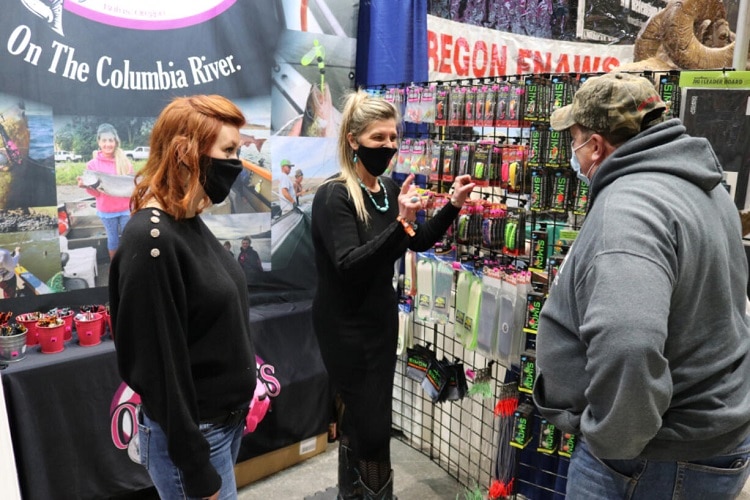
In addition to making the event venue safe, the following prevention measures are crucial for the safety of each person who will be present at the trade show.
Entry Requirements
- It is usually helpful to ask participants, including staff and guests, to provide proof of COVID-19 vaccination. This should show that they are fully vaccinated against the virus. Alternatively, organizers could request for a COVID-19 negative test result conducted not more than three days before attending the show. While this is not part of CDC’s recommendations, having fully vaccinated guests or visitors who pass the COVID test together in one venue will limit the spread of the coronavirus disease.
Personal Hygiene
- Encourage attendees and staff to cover sneezes and coughs properly. Frequent handwashing should also be encouraged.
- Ensure that everyone attending the trade show wears a mask at all times during the event. This includes visitors, vendors, and all trade show workers. It is also important to emphasize the need for wearing masks correctly.
Personal Safety
- Emphasize physical distancing both at indoor and outdoor trade show events. Staff and all attendees should remain at least 6 feet apart from each other, especially if people who are not fully vaccinated are allowed to attend the show.
- Educate trade show workers and attendees to stay home if they have any symptoms of the coronavirus disease or feel sick. It is equally important to encourage them to go for COVID-19 testing.
- Let attendees and staff who have not been fully vaccinated understand the importance of going into isolation and getting tested if they have been in close contact with anyone known to have COVID-19.
Avoid Certain Activities
- Interactive demonstrations that involve the use of the same touch screens or wearing the same headsets should not be allowed.
- Food or wine tasting or sampling is not allowed. Discourage vendors from offering buffet-style services.
- Food vendors must pre-package their products or store them away from visitors. Also, vendors must dispense all foods themselves. Visitors are not allowed to use their own containers.
Communicate Before the Event
- Convey all COVID-19 safety plans and protocols to guests beforehand through advanced registration. This will allow attendees to have more confidence showing up for the event, knowing the organizer has proper health and safety measures in place.
- Ensure that all attendees are aware of the local health department’s regulations and that they follow them.
- Make it abundantly clear that people with COVID-19 symptoms are not allowed to attend the trade show. Also, those under quarantine or isolation orders are not permitted to attend.
Capacity Limitations
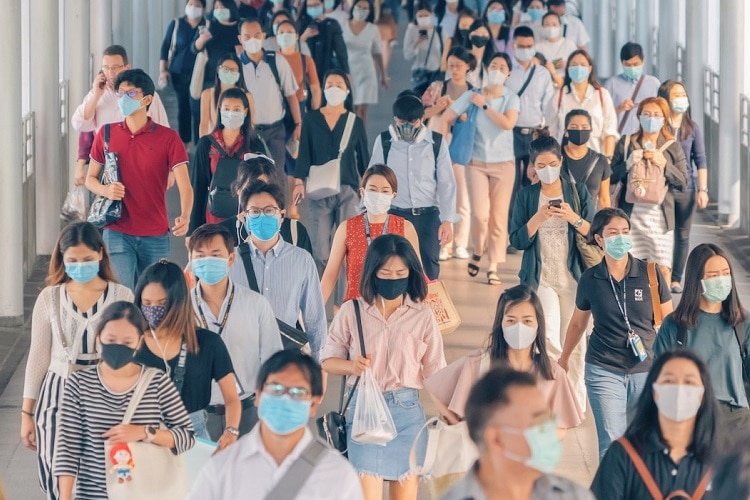
Headcount is a major consideration when organizing a trade show because it ultimately impacts the ROI. But how many people are likely to attend an in-person trade show in a post-COVID era?
Making an educated guess about the expected turnout was a lot easier before COVID but the playing field has changed significantly, and many revenue leaders are less likely to show up at events where a potentially large number of people will be in attendance.
Although many executives were skeptical about attending trade shows earlier in 2021, more people now feel safer attending in-person events in the second half of the year, thanks to the government’s race to curb COVID-19 by providing vaccines.
Still, organizers need to figure out effective ways to manage the crowd, considering the capacity limitations still in place. The Center for Disease Control and Prevention (CDC) does not explicitly provide a specific minimum or a maximum number of attendees for gatherings.
However, organizers must stick with applicable local laws and regulations and also work with local public health officials to figure out the best prevention strategies for their area.
Concerning capacity limitation, here are some of the major ways to ensure the safety of staff and patrons at trade shows:
- Arrange seating to separate attendees into groups during seminars, networking sessions, VIP experiences, panel discussions, conferences, and other similar events at the trade show. Separating attendees into smaller groups can minimize the spread of the COVID-19 virus. However, this approach does not override the need for wearing masks and other prevention measures within each group.
- Trade show organizers need to continuously monitor local COVID-19 vaccination coverage in addition to community transmission levels in their area. This will enable them to determine the prevention strategies to apply for low, moderate, substantial, or high community transmission levels.
- Notify staff and attendees who are not fully fascinated to avoid sustained close contact and crowded situations, even when outdoors. This is particularly applicable in areas with substantial to high community transmission levels.
- Ensure that the event space is large enough to allow at least 6 feet distance between people who are not fully vaccinated against COVID-19. This is especially true for indoor situations.
Is Testing or Symptom Screening Necessary?
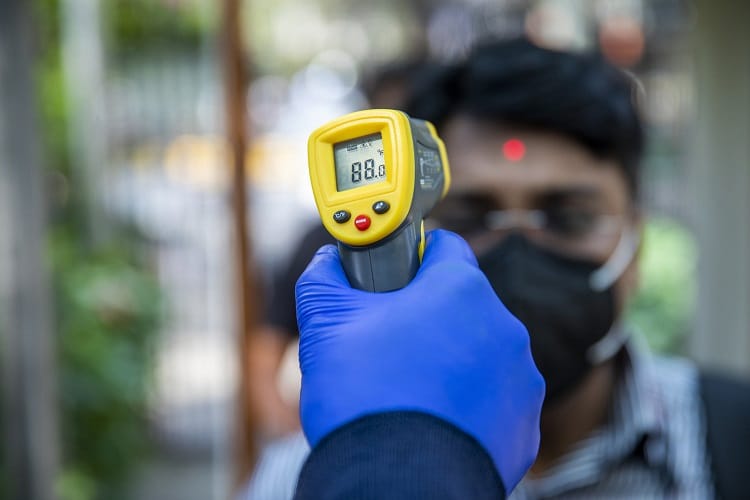
As earlier mentioned, the CDC does not make it mandatory to test or screen staff and all attendees for coronavirus before letting them into the venue of an event.
In other words, it is entirely up to the trade show organizers to decide whether or not to conduct temperature checks and COVID-19 symptom screening at the door of the venue.
However, the CDC does recommend carrying out health checks in areas of substantial to high transmission levels. Health checks could be in the form of screening staff and all attendees for symptoms of the coronavirus or conducting temperature screening.
Whichever testing or screening method you adopt, it is important to do it safely and respectfully. Also, all relevant privacy laws must be followed while conducting health checks at the trade show.
Conclusion – Organizing A Trade Show During And After COVID 19
Keep in mind that the longer people interact in a limited space, the greater the risk of contracting and spreading the COVID-19 virus.
The chances of getting the virus are even higher for indoor events than activities held in outdoor spaces.
That’s because it is a lot trickier to maintain physical distancing indoors. Plus, the viral particles are more likely to disperse quickly and easily in outdoor situations than indoors.
If attendees turn out in large numbers, as any trade show event planner would typically hope, the more closely they are likely to interact, and this increases the chances of getting COVID. Therefore, knowing how to organize a trade show during COVID is essential knowledge for event organizers.
Reference Articles:
